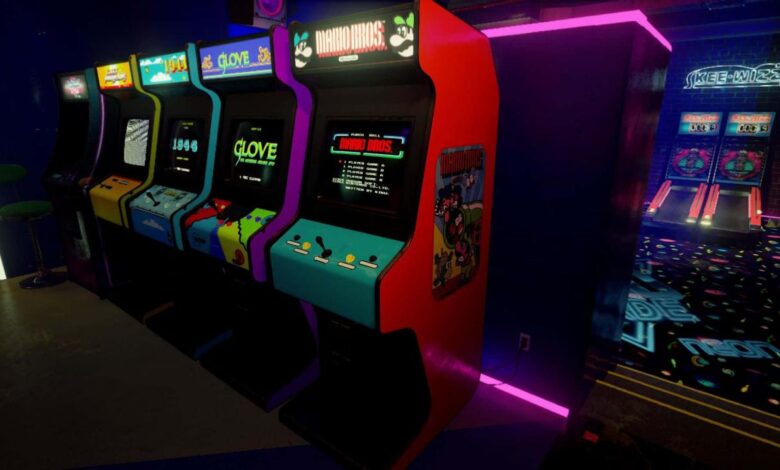Retro Games Reimagined Blends Memories and Technology

The world of video games is in a state of perpetual evolution, but a new trend is looking to the past for inspiration. A powerful wave of nostalgia, coupled with groundbreaking new technology, is ushering in a new era of retro games reimagined. This isn’t just about simple remasters or a fresh coat of paint; it’s a fundamental rethinking of classic titles, blending the cherished memories of a golden age with the graphical power, immersive storytelling, and modern conveniences of today. This article will take a deep dive into the core concepts driving this movement, exploring the pivotal role of advanced hardware, the creative techniques used to reinvent beloved classics, the new business models enabling this renaissance, and the profound impact it will have on both a new generation of players and the seasoned veterans who grew up with these games.
The New Nostalgia

The appeal of retro games is undeniable. They are a cultural touchstone for millions of gamers, a reminder of a simpler time when a game was judged by its gameplay, not its photorealistic graphics. The new era of reimagined retro games is a direct response to this sentiment, offering a way to experience the magic of the past in a way that feels fresh and new.
A. The Power of a Shared Experience
For a generation of gamers, classic titles like Final Fantasy VII, Super Mario 64, and The Legend of Zelda: Ocarina of Time are more than just games; they are a shared cultural experience. The new reimagined versions of these games allow a new generation of players to experience the magic of these classics for the first time, while also allowing the original fans to revisit them with a fresh perspective. This creates a bridge between generations, a shared experience that is rare in today’s fragmented media landscape.
B. The Comfort of the Familiar
In an age of endless new releases and a constant stream of new content, there is a comfort in the familiar. A reimagined retro game offers a player a sense of security and a chance to return to a beloved world with the peace of mind that comes with knowing the story and the core gameplay. It’s a chance to revisit a cherished memory and to experience the joy of a classic story without the technical limitations of the past.
C. The Demand for Timeless Gameplay
The new era of retro games is a testament to the power of timeless gameplay. Many classic titles, with their simple mechanics, challenging gameplay, and focus on fun, have a charm that is missing from many modern, over-engineered games. The reimagined versions of these games prove that a great game is not about its graphics; it’s about its core gameplay loop. It’s a powerful reminder that a game that is fun to play will always stand the test of time.
The Art of Reinvention
Reimagining a retro game is a delicate art. It requires a deep respect for the original source material, a creative vision for the future, and a mastery of modern game development techniques.
A. From Pixels to Photorealism
The most obvious change in a reimagined retro game is the graphics. A low-resolution pixel art world is transformed into a stunning, photorealistic one, with a new level of detail, lighting, and environmental effects. The art of this process is to ensure that the new visuals enhance, rather than detract from, the original artistic vision. A reimagined game should feel like a more detailed and immersive version of the world we remember, not a completely different one.
B. The Expanded Narrative
Many classic games had a narrative that was limited by the technical constraints of the time. A reimagined version of these games can expand on the original story, adding new characters, new plot points, and a deeper exploration of the lore. This gives a new generation of players a more detailed and immersive story, while also giving the original fans a new reason to return to a familiar world. The key is to ensure that the new narrative additions are in the spirit of the original and do not feel out of place.
C. The New Game Mechanics
A reimagined game can also add new game mechanics and quality-of-life improvements that were not possible in the past. This includes a more modern camera system, a more intuitive control scheme, and a more user-friendly interface. These changes are designed to make the game feel more modern and to eliminate the technical frustrations of a classic game. However, the art of this is to ensure that the new mechanics do not compromise the core gameplay loop and the spirit of the original.
The New Business Model

The business model for reimagined retro games is more complex and more profitable than a simple one-time purchase. It’s a new ecosystem that is creating a continuous stream of revenue and a new relationship with the player.
A. The Episodic Release
A new trend for reimagined retro games is the episodic release model. A large game, such as Final Fantasy VII, can be released in multiple parts over several years. This provides a continuous stream of revenue for the developers and gives them the time to add more content, polish the game, and create a more immersive and detailed experience. This model also allows the player to experience the game’s story in a more digestible and engaging way.
B. The Power of DLC
A reimagined retro game can also be a platform for new content. Developers can release downloadable content (DLC) that adds new characters, new quests, and new storylines to a familiar world. This gives a player a reason to return to the game and provides a new stream of revenue for the developers. The art of this is to ensure that the DLC is a meaningful addition to the game and does not feel like a simple cash grab.
C. The Subscription Model
The subscription model is also a major driver of the retro gaming renaissance. Services like Nintendo’s Switch Online and Xbox’s Game Pass provide players with access to a massive library of classic titles for a single monthly fee. This model is a major step forward for the preservation of video games, as it ensures that classic titles are always available to a new generation of players. It is also a powerful tool for a player to discover a new classic or to return to an old favorite.
Conclusion
The new era of retro games reimagined is a powerful and transformative force that is fundamentally reshaping how we play, connect, and experience entertainment. It is a testament to the power of a shared cultural experience, the comfort of the familiar, and the timeless appeal of great gameplay. The ability of modern game developers to take a beloved classic and to reinvent it with stunning, photorealistic graphics, a more immersive narrative, and modern conveniences is a new form of artistry. The new business models, such as the episodic release, DLC, and the subscription model, are a clear signal that this movement is here to stay.
However, as we embrace this new era, we must also confront the significant challenges that lie ahead. The most critical one is the delicate balance between nostalgia and innovation. A reimagined game must be faithful to the original source material while also offering a new and fresh experience. It is a difficult line to walk, and a mistake can easily alienate the original fans. The future of retro games is a journey that will be defined not just by its technological prowess but by its ability to create a new kind of magic, a blend of the past and the future that is as timeless as it is new. The retro games reimagined revolution is here, and it is a powerful force that is poised to change the way we play, forever.







